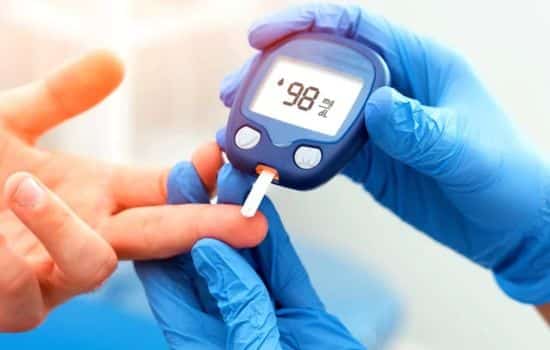Diabetes is one of the most common chronic diseases worldwide, characterized by an abnormal increase in blood glucose levels.
Although diabetes is manageable with proper care, poor glucose control can have serious health consequences.
This condition affects the way the body processes sugar, fats, and carbohydrates, which can lead to long-term complications if not treated properly.
In this article, we will explore what diabetes is, the effects of having high glucose levels, the consequences that can arise, and how applications such as mySugr can help you manage your diabetes and maintain adequate control of glucose levels.
What is diabetes?
Diabetes is a chronic metabolic disease that affects how the body manages glucose (blood sugar). There are two main types of diabetes: type 1 and type 2, both characterized by high blood glucose levels, although their causes and development mechanisms are different.
1. Type 1 diabetes
Type 1 diabetes is an autoimmune condition in which the immune system attacks and destroys the cells in the pancreas that produce insulin. Insulin is a crucial hormone that allows the body's cells to absorb glucose and use it as an energy source.
Without insulin, blood glucose levels rise significantly. This type of diabetes is more common in younger people and is not related to lifestyle or diet.
2. Type 2 diabetes
Type 2 diabetes is the most common form of diabetes and usually develops as people age, although it is also seen more often in people who are overweight or have an unhealthy diet.
In type 2 diabetes, the body becomes insulin resistant, meaning that insulin doesn't work properly or the pancreas doesn't produce enough of it. This also leads to high blood glucose levels.
Consequences of having high glucose levels
High blood glucose levels, known as hyperglycemia, can be detrimental to long-term health if not properly controlled. The effects of hyperglycemia accumulate over time and can damage various organs and systems in the body.
1. Damage to blood vessels
One of the most common effects of uncontrolled diabetes is damage to blood vessels. Excess glucose in the blood can damage blood vessel walls, which can lead to circulatory problems.
This increases the risk of developing heart disease, kidney failure, and circulatory problems in the legs. Damage to blood vessels can also contribute to the formation of blood clots and increase the risk of stroke.
2. Nerve damage (diabetic neuropathy)
Diabetic neuropathy is a common complication of uncontrolled diabetes, involving nerve damage due to high blood glucose levels.
This damage can cause pain, numbness, and weakness in the extremities, and can affect a person's ability to sense pain or temperature changes. In severe cases, diabetic neuropathy can lead to infections, foot ulcers, and even the need for amputation.
3. Eye problems (diabetic retinopathy)
Diabetic retinopathy is an eye disease caused by damage to the blood vessels in the retina due to high blood glucose levels. This condition can lead to vision loss and, in severe cases, blindness.
Diabetic retinopathy is a leading cause of blindness in adults and usually presents no symptoms until the disease progresses to an advanced stage.
4. Kidney failure (diabetic nephropathy)
The kidneys can also be affected by high blood glucose levels. Diabetic nephropathy is a common kidney complication in people with poorly controlled diabetes, which can lead to kidney failure and, in severe cases, the need for dialysis.
The kidneys have small blood vessels that can be damaged by high glucose, affecting their ability to filter waste and excess fluid from the body.
5. Skin diseases
People with diabetes are also at increased risk of developing skin infections and other dermatological problems due to poor circulation and nerve damage. Dry, itchy skin, fungal infections, and wound healing problems are common in people with uncontrolled diabetes.
6. Increased risk of infections
Diabetes can weaken the immune system, increasing the risk of infections. People with diabetes are more likely to develop infections in the skin, gums, urinary tract, and other areas of the body. Infections may also be more difficult to treat due to the immune system's reduced ability to fight them.
- Apps to Detect Impurities in the Air
- Free Apps to Learn English
- Apps to Try Beard Styles
- The best music recognition apps
- Apps to Block Fraud Calls
How to manage diabetes and glucose levels?
Diabetes, although a chronic disease, can be effectively managed through lifestyle changes, regular monitoring of blood glucose levels, and, when necessary, medication.
The key to managing diabetes and avoiding serious complications is keeping glucose levels within a healthy range. This is where mobile apps, such as mySugr, which help users monitor and manage their diabetes easily and conveniently.
mySugr Features
1. Monitoring glucose levels
One of the most notable features of mySugr is its ability to allow users to easily record and monitor their glucose levels.
Through the app, you can enter your glucose test results and track fluctuations over time. This will help you detect patterns and adjust your treatment accordingly.
2. Food and physical activity log
mySugr It also allows users to log their food and physical activities, which is essential for managing diabetes. Diet and exercise are key factors in regulating glucose levels, and this feature will help you get a complete picture of how these factors influence your blood sugar levels.
3. Detailed reports
The app offers detailed reports and graphs of your data, making it easier to interpret. These reports can be shared with your doctor, allowing them to adjust your treatment more effectively. Having a clear view of your data can help you better understand how to manage your diabetes.
4. Reminders and alerts
mySugr It also includes reminder features to ensure you measure your glucose levels at the right times and take the necessary medication. Reminders can help you stick to a consistent treatment plan, which is essential for long-term diabetes management.
5. Integration with other health devices
The app is compatible with various glucose monitoring devices, allowing you to easily integrate your data from different sources. This simplifies the monitoring process and allows you to have more accurate and up-to-date control of your glucose levels.
Benefits of using mySugr to manage diabetes
1. Facilitates the control of glucose levels
With mySugrWith this, you can accurately and consistently monitor your glucose levels. This helps you keep them within the range recommended by your doctor, reducing the risk of long-term complications.
2. Helps you lead a healthier lifestyle
By integrating diet and physical activity tracking, the app allows you to make informed decisions about your diet and exercise. This can help you improve your overall health and better manage your diabetes.
3. Provides valuable information for treatment
By constantly recording your data, mySugr It provides you with valuable information that you can share with your doctor. This facilitates decision-making about your treatment and allows you to adjust your medication or lifestyle recommendations as needed.
Conclusion
Diabetes and high blood glucose levels are serious conditions that can have significant long-term health consequences if not managed properly.
However, with constant monitoring of glucose levels, healthy eating, regular exercise and the use of tools such as mySugr, it is possible to control the disease and minimize the risk of complications.
Keeping an accurate record of your glucose levels, physical activity, and eating habits is key to effective diabetes management, and mobile apps can make this process more accessible and easier.
If you live with diabetes, don't underestimate the power of digital tools to improve your quality of life and keep your health under control.






